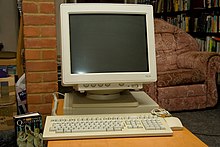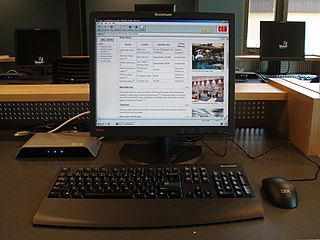
In computer networking, a thin client is a simple (low-performance) computer that has been optimized for establishing a remote connection with a server-based computing environment. They are sometimes known as network computers, or in their simplest form as zero clients. The server does most of the work, which can include launching software programs, performing calculations, and storing data. This contrasts with a rich client or a conventional personal computer; the former is also intended for working in a client–server model but has significant local processing power, while the latter aims to perform its function mostly locally.

The X Window System is a windowing system for bitmap displays, common on Unix-like operating systems.

A computer terminal is an electronic or electromechanical hardware device that can be used for entering data into, and transcribing data from, a computer or a computing system. The teletype was an example of an early-day hard-copy terminal and predated the use of a computer screen by decades.

Citrix Systems, Inc. is an American multinational cloud computing and virtualization technology company that provides server, application and desktop virtualization, networking, software as a service (SaaS), and cloud computing technologies. Citrix products were claimed to be in use by over 400,000 clients worldwide, including 99% of the Fortune 100, and 98% of the Fortune 500.
The Network Computer was a diskless desktop computer device made by Oracle Corporation from about 1996 to 2000. The devices were designed and manufactured by an alliance, which included Sun Microsystems, IBM, and others. The devices were designed with minimum specifications, based on the Network Computer Reference Profile. The brand was also employed as a marketing term to try to popularize this design of computer within enterprise and among consumers.

Network-attached storage (NAS) is a file-level computer data storage server connected to a computer network providing data access to a heterogeneous group of clients. The term "NAS" can refer to both the technology and systems involved, or a specialized device built for such functionality.
Microsoft Exchange Server is a mail server and calendaring server developed by Microsoft. It runs exclusively on Windows Server operating systems.
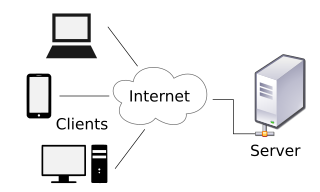
In computing, a client is a piece of computer hardware or software that accesses a service made available by a server as part of the client–server model of computer networks. The server is often on another computer system, in which case the client accesses the service by way of a network.
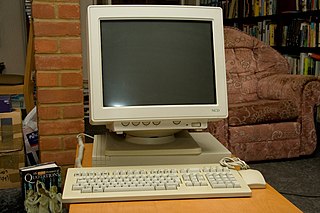
In computing, an X terminal is a display/input terminal for X Window System client applications. X terminals enjoyed a period of popularity in the early 1990s when they offered a lower total cost of ownership alternative to a full Unix workstation.
Linux Terminal Server Project (LTSP) is a free and open source terminal server for Linux that allows many people to simultaneously use the same computer. Applications run on the server with a terminal known as a thin client handling input and output. Generally, terminals are low-powered, lack a hard disk and are quieter and more reliable than desktop computers because they do not have any moving parts.

A diskless node is a workstation or personal computer without disk drives, which employs network booting to load its operating system from a server.

Opsware, Inc. was a software company based in Sunnyvale, California, that offered products for server and network device provisioning, configuration, and management targeted toward enterprise customers. Opsware had offices in New York City, Redmond, Washington, Cary, North Carolina, and an engineering office in Cluj, Romania.

A multiseat, multi-station or multiterminal system is a single computer which supports multiple independent local users at the same time.

In computing, the term remote desktop refers to a software- or operating system feature that allows a personal computer's desktop environment to be run remotely off of one system, while being displayed on a separate client device. Remote desktop applications have varying features. Some allow attaching to an existing user's session and "remote controlling", either displaying the remote control session or blanking the screen. Taking over a desktop remotely is a form of remote administration.
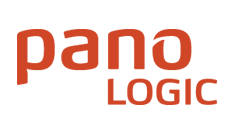
Pano Logic was a manufacturer of devices which presented virtual desktops to the end user with no local processing power. They describe this concept as "zero client". This is perceived as offering benefits in end-user support and in power provision to desks. OEM versions have been included in displays from some vendors, allowing a single unit to be deployed. The company failed in October 2012. In March 2013, Propalms announced they had acquired the rights to support Panologic customers, and will "help transition the customer base to a new platform".
InterCon Systems Corporation was founded in April 1988 by Kurt D. Baumann and Mikki Barry to produce software to connect Macintosh computers in environments that were not Macintosh-exclusive. At the time, there was no real concept of the Internet and there was still a question of whether the TCP/IP protocols or OSI protocols would be adopted widely. Over the next 9 years, the company grew from three employees to over 100 and sold software in the US, Europe and Japan.
This outline is an overview of software and a topical guide in list form.
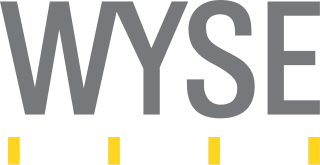
Wyse Technology, often shortened to Wyse, was an independent American manufacturer of cloud computing systems. As of 2012, Wyse is a subsidiary of Dell. Wyse are best remembered for their video terminal line introduced in the 1980s, which competed with the market-leading Digital. They also had a successful line of IBM PC compatible workstations in the mid-to-late 1980s. But starting late in the decade, Wyse were outcompeted by companies such as eventual parent Dell. Current products include thin client hardware and software as well as desktop virtualization solutions. Other products include cloud software-supporting desktop computers, laptops, and mobile devices. Dell Cloud Client Computing is partnered with IT vendors such as Citrix, IBM, Microsoft, and VMware.

Teradici Corporation was a privately held software company founded in 2004, which was acquired by HP Inc. in October 2021. Teradici initially developed a protocol (PCoIP) for compressing and decompressing images and sound when remotely accessing blade servers, and implemented it in hardware. This technology was later expanded to thin clients/zero clients for general Virtual Desktop Infrastructure. Teradici's protocol or hardware is used by HP, Dell-Wyse, Amulet Hotkey, Samsung, Amazon Web Services, Fujitsu, and VMware.

